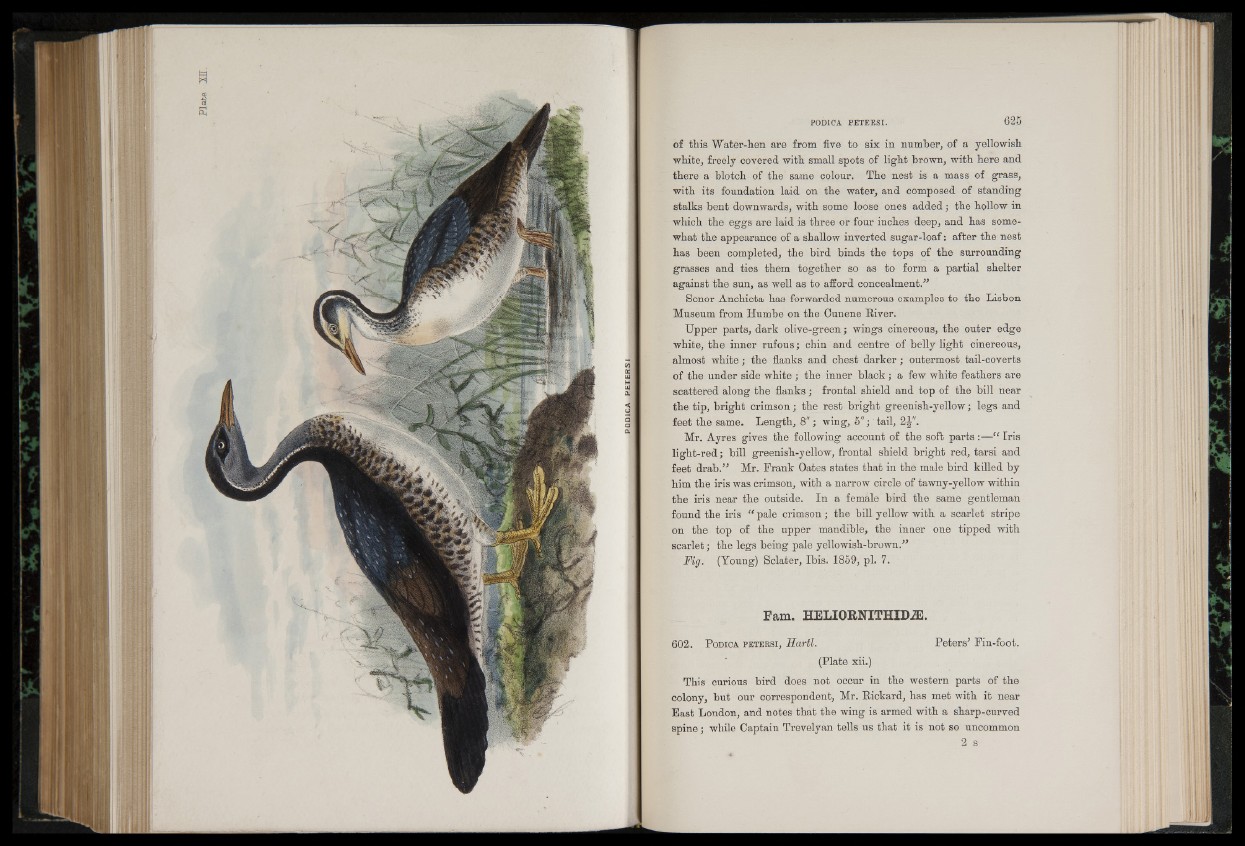
P0D1CA PETERS 1
of this Water-hen are from five to six in number, of a yellowish
white, freely covered with small spots of light brown, with here and
there a blotch of the same colour. The nest is a mass of grass,
with its foundation laid on the water, and composed of standing
stalks bent downwards, with some loose ones added; the hollow in
which the eggs are laid is three or four inches deep, and has somewhat
the appearance of a shallow inverted sugar-loaf: after the nest
has been completed, the bird binds the tops of the surrounding
grasses and ties them together so as to form a partial shelter
against the sun, as well as to afford concealment.”
Senor Anchieta has forwarded numerous examples to the Lisbon
Museum from Humbe on the Cunene River.
Upper parts, dark olive-green; wings cinereous, the outer edge
white, the inner rufous; chin and centre of belly light cinereous,
almost white; the flanks and chest darker; outermost tail-coverts
of the under side white ; the inner black; a few white feathers are
scattered along the flanks; frontal shield and top of the bill near
the tip, bright crimson; the rest bright greenish-yellow; legs and
feet the same. Length, 8" ; wing, 5"; tail, 2^".
Mr. Ayres gives the following account of the soft parts:—“ Iris
light-red; bill greenish-yellow, frontal shield bright red, tarsi and
feet drab.” Mr. Prank Oates states that in the male bird killed by
him the iris was crimson, with a narrow circle of tawny-yellow within
the iris near the outside. In a female bird the same gentleman
found the iris “ pale crimson; the bill yellow with a scarlet stripe
on the top of the upper mandible, the inner one tipped with
scarlet; the legs being pale yellowish-brown.”
Fig. (Young) Sclater, Ibis. 1859, pi. 7.
Fam. HELIORNITHIDiE.
602. P odica p e t e r s i, Hartl. Peters’ Pin-foot.
(Plate xii.)
This curious bird does not occur in the western parts of the
colony, but our correspondent, Mr. Rickard, has met with it near
East London, and notes that the wing is armed with a sharp-curved
spine; while Captain Trevelyan tells us that it is not so uncommon